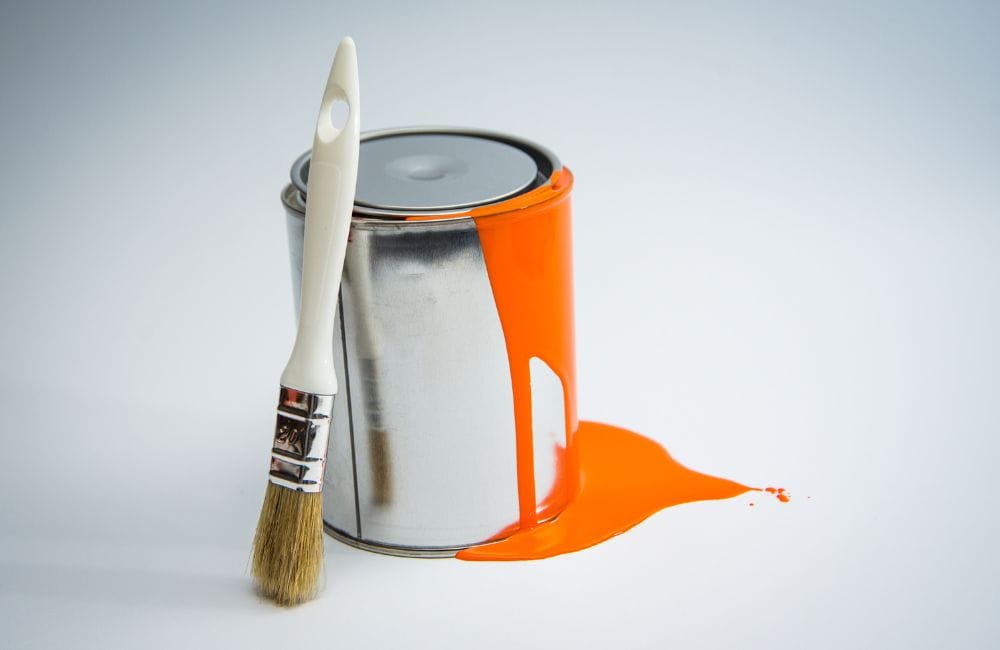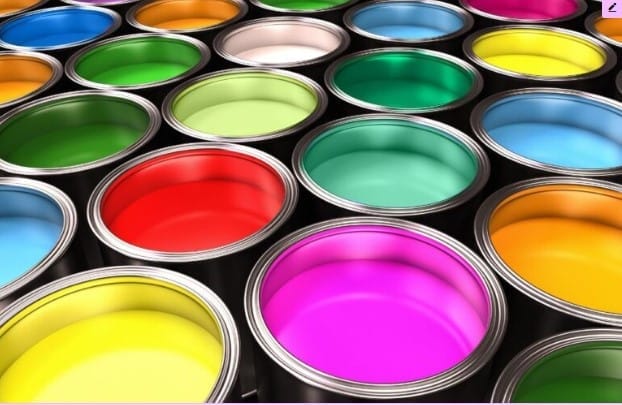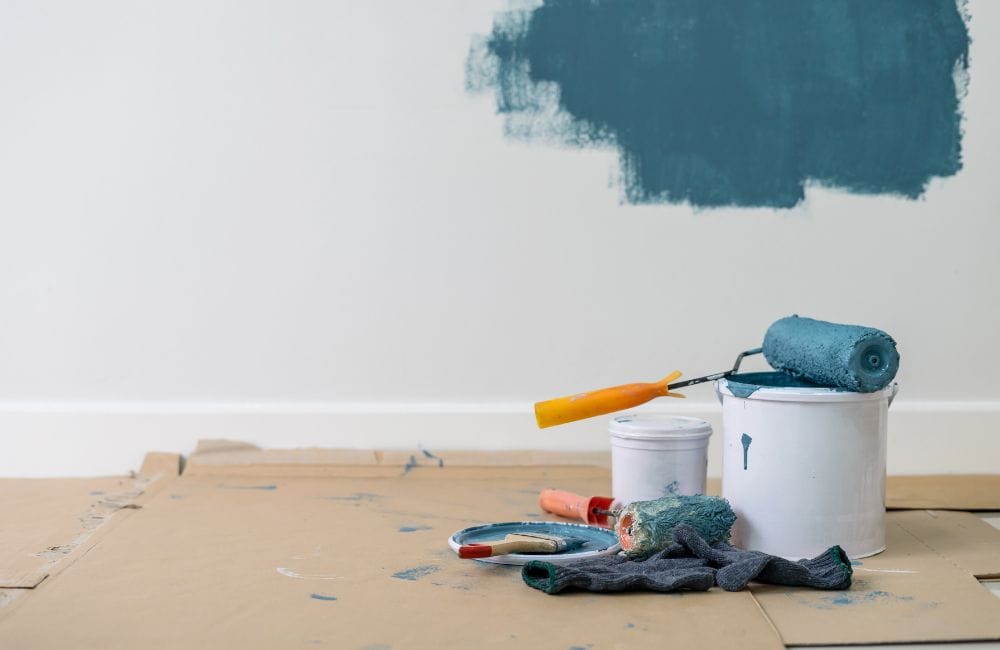
5 Best Practices for Storing Leftover Paint — Expert Tips from Your Local Painting Company
Table of Contents
Key Takeaways
5 Recommended Practices for Storing Leftover Paint by a Painting Company
- Use Airtight Containers
- Label Each Container
- Store in a Cool, Dry Place
- Regularly Check Stored Paint
- Keep Paint Away from Children and Pets
How to Reuse Leftover Paint
Frequently Asked Questions
Transform Your Home with West Hartford House Painting Experts
Key Takeaways:✔ Use airtight containers to preserve paint quality and prevent it from drying out. ✔ Label each container with the color, date, and room used to ensure easy identification for future use. ✔ Store paint in a cool, dry place to maintain its consistency and prolong its shelf life. ✔ Regularly check stored paint for any signs of spoilage or separation to ensure it remains usable. ✔ Keep paint away from children and pets to prevent accidental ingestion or exposure. ✔ Reusing leftover paint creatively can help you save money and reduce waste by incorporating it into home improvement projects or donating it to community programs. |

Proper storage of leftover paint is essential not only for preserving its quality but also for reducing environmental impact. The U.S. Environmental Protection Agency (EPA) estimates that about 10 percent of the house paint purchased in the United States each year—about 65 to 69 million gallons—is discarded. By following these best practices from a painting company, you can extend the life of your paint, save money, and help protect the environment.
5 Recommended Practices for Storing Leftover Paint by a Painting Company
Properly storing leftover paint is crucial not only for maintaining its quality but also for minimizing environmental impact. Paint waste is a significant concern due to its CO2 emissions, and it takes an astonishing 700 years to decompose in landfills. By following these recommended practices from a painting company, you can extend the life of your paint, save money, and contribute to a healthier planet.
Here are five essential tips for storing leftover paint effectively.
1. Use Airtight Containers
Proper storage of leftover paint is essential to ensure its longevity and quality for future use. One of the most important practices recommended by any reputable painting company is to use airtight containers. Here’s why airtight containers are crucial:
Prevent Drying Out: Exposure to air can cause paint to dry out and form a thick skin on the surface, making it unusable.
Maintain Consistency: Keeping the paint airtight helps maintain its original consistency, ensuring it applies smoothly the next time you use it.
Avoid Contamination: Sealed containers protect the paint from contaminants such as dust, dirt, and insects, preserving its quality.
Types of Containers Best for Storing Paint
Different containers can be used to store leftover paint effectively. Here are some of the best options recommended by a painting company:
- Original Paint Cans: The original paint cans are usually the best option as they are specifically designed to store paint. Ensure the rim and lid are clean before sealing.
- Mason Jars: For small amounts of leftover paint, mason jars work well. They are airtight and easy to label.
- Plastic Paint Buckets: For larger quantities, plastic paint buckets with airtight lids are a good alternative.
- Vacuum-Sealed Bags: These are ideal for small touch-up amounts and can save space.
Tips on How to Properly Seal Paint Cans
Sealing paint cans properly is crucial to ensure the paint stays fresh. Follow these tips recommended by a painting company to ensure a tight seal:
- Clean the Rim and Lid: Before sealing, make sure the rim and lid are free from any paint residue. Use a clean cloth to wipe them down.
- Use Plastic Wrap: Place a piece of plastic wrap over the opening of the can before putting the lid on. This adds an extra layer of protection against air.
- Hammer the Lid: Use a rubber mallet to gently tap the lid back onto the can. Avoid using a regular hammer as it can damage the lid, preventing a proper seal.
- Store Upside Down: For an extra seal, some painting companies recommend storing the paint upside down. This creates an airtight seal by allowing the paint itself to form a seal around the lid.
2. Label Each Container
Properly labeling your paint containers is an essential step recommended by any reputable painting company to ensure the longevity and usability of your leftover paint. This practice not only helps in keeping your storage organized but also saves you time and effort when you need to reuse the paint.
Information to Include on Labels
When labeling your paint containers, a painting company would suggest including the following details to make sure you have all the necessary information at your fingertips:
- Color Name/Code: Clearly indicate the color name and any specific code used by the manufacturer.
- Date of Purchase: Note the date when the paint was purchased or mixed.
- Room/Area Used In: Specify the room or area where the paint was used to make future touch-ups easier.
- Type of Paint: Mention whether it’s interior or exterior paint, and the finish type (e.g., matte, gloss, semi-gloss).
- Manufacturer and Product Line: Include the manufacturer’s name and the specific product line if applicable.
- Batch Number: If available, the batch number can be useful for matching more paint if needed.
Methods for Labeling
Different methods can be employed to label your paint containers effectively. A painting company might recommend the following options based on what’s most convenient for you:
- Stickers: Use pre-made or custom stickers that you can write on and adhere to the container.
- Tape: Painter’s tape or masking tape can be used as a quick labeling solution. Write the information with a permanent marker.
- Markers: Directly writing on the container with a waterproof marker is also a simple and effective method.

3. Store in a Cool, Dry Place
A painting company suggests that proper storage conditions are essential for maintaining the quality of leftover paint. Ensuring that paint is stored in a cool, dry place can significantly extend its usability and prevent spoilage.
Ideal Temperature and Humidity Conditions for Paint Storage
Storing paint at a stable temperature, ideally between 60°F and 80°F (15°C to 27°C). High humidity levels can cause condensation inside the container, leading to the paint becoming lumpy or developing mold. Conversely, a painting company stresses that low humidity can cause the paint to dry out and form a thick skin on the surface. Keeping paint in an environment with moderate humidity, around 40-50%, is advised by painting companies.
- Temperature: 60°F to 80°F (15°C to 27°C)
- Humidity: 40-50%
Examples of Good Storage Locations
A painting company would suggest that choosing the right location for paint storage is crucial. Certain areas in a home are more suitable for maintaining the necessary conditions for paint preservation.
- Basement: Basements typically have stable temperatures and can be an excellent place to store paint, provided they are dry and well-ventilated.
- Utility Room: Utility rooms often remain cool and dry, making them a practical option for storing leftover paint.
- Closet: An interior closet that doesn’t experience temperature fluctuations can also be a good storage spot for paint.
What to Avoid
According to a painting company, improper storage locations can lead to paint deterioration, rendering it unusable. It’s important to avoid areas that expose paint to extreme conditions.
- Direct Sunlight: Exposure to direct sunlight can cause the paint to heat up, leading to chemical changes that can alter its consistency and color.
- Extreme Temperatures: Both excessive heat and freezing temperatures can ruin paint. Heat can cause paint to dry out and thicken, while freezing can cause it to separate and become unusable.
- Damp Areas: Areas with high humidity or dampness, such as garages or sheds, can lead to mold growth and spoilage of the paint.
4. Regularly Check Stored Paint
A painting company suggests that regularly checking stored paint is crucial to ensure its quality remains intact over time. Additional, every few months, give stored paint a good stir. This helps maintain its consistency and prevents separation .A painting company often stresses the importance of this practice to avoid potential issues when it’s time to reuse the paint. Periodic checks help in identifying any signs of deterioration early, allowing for timely action.
Signs of Paint Deterioration to Look Out For
When inspecting stored paint, a painting company recommends looking out for these common signs of deterioration:
- Separation: Paint that has separated into layers may need thorough mixing, but if it doesn’t blend back together smoothly, it might be unusable.
- Foul Odor: A sour or rancid smell indicates that the paint has gone bad and should be disposed of properly.
- Clumps or Thickening: If the paint has become chunky or excessively thick, it may no longer provide a smooth finish.
- Rust or Corrosion: Rust on the can’s lid or interior can contaminate the paint, making it unsuitable for use.

5. Keep Paint Away from Children and Pets
Proper storage of leftover paint is not only essential for maintaining its quality but also for ensuring the safety of household members, especially children and pets. Here are some practical tips from a painting company to help keep paint out of reach of curious hands and paws.
Store Paint in a Secure Location
Ensuring paint containers are kept in a secure location is the first step in preventing accidents. A painting company would suggest the following:
- High Shelves: Place paint containers on high shelves where children and pets cannot reach.
- Locked Cabinets: Use locked cabinets or storage rooms to keep paint safely out of reach.
- Dedicated Storage Areas: Designate a specific area for paint storage that is off-limits to children and pets.
Use Childproof and Pet-Proof Containers
Airtight containers are essential for preserving paint, but it is equally important to ensure these containers are childproof and pet-proof. A painting company recommends:
- Childproof Lids: Opt for containers with childproof lids to prevent accidental openings.
- Secured Lids: Make sure all lids are tightly secured after each use to avoid spills and leaks.
Keep Paint Supplies Together
Keeping paint supplies organized and stored together can minimize the risk of children and pets accessing them. A painting company advises:
- Toolboxes: Store brushes, rollers, and other supplies in a toolbox with a secure latch.
- Storage Bins: Use labeled storage bins for easy identification and quick access while keeping supplies out of reach.
Inform Household Members
Educate everyone in the household about the importance of keeping paint out of reach. A painting company suggests:
- Safety Rules: Establish and communicate safety rules regarding the handling and storage of paint.
- Awareness: Ensure all household members know where the paint is stored and the risks associated with it.
How to Reuse Leftover Paint
Leftover paint doesn’t have to go to waste. There are numerous creative ways to reuse it, contribute to community projects, or even mix it to create new colors. Here are some tips from a painting company on how to make the most out of your leftover paint.
Creative Ideas for Using Leftover Paint
Leftover paint can be a fantastic resource for small home improvement projects. Here are some innovative ideas to get started:
- Accent Walls: Use leftover paint to create an accent wall in a room, adding a splash of color and a focal point.
- Furniture Makeover: Revitalize old furniture by giving it a fresh coat of paint. Chairs, tables, and shelves can all benefit from a new color.
- Decorative Touches: Add unique designs or patterns to your walls, such as stripes, polka dots, or stencils.
- Outdoor Projects: Leftover exterior paint can be used for garden projects, like painting planters, birdhouses, or fences.
Suggestions for Donating Leftover Paint
If you have leftover paint that you don’t need, consider donating it. Many community centers and schools can put it to good use:
- Local Schools: Schools often have art programs that can benefit from donated paint. Contact local schools to see if they accept paint donations.
- Community Centers: Many community centers run arts and crafts programs for children and adults. They can often use leftover paint for their projects.
- Non-Profit Organizations: Some nonprofits conduct renovation projects and can make good use of your leftover paint. Organizations like Habitat for Humanity may accept paint donations for their building projects..
Frequently Asked Questions
What services does a painting company offer?
A painting company typically offers a variety of services, including interior and exterior painting, wallpaper removal, drywall repair, deck staining, and power washing. Many painting companies also provide color consultation to help clients choose the perfect palette for their spaces. Additionally, some companies offer custom painting services, such as murals or decorative finishes, to add unique touches to homes and businesses. For more information, visit House Painter West Hartford.
How long does paint usually last in storage?
Unopened paint cans can last for up to 10 years if stored properly in a cool, dry place away from extreme temperatures. Once opened, latex paint can last for up to 2-5 years, depending on how well the can is sealed and the storage conditions. Oil-based paint has a longer shelf life and can last up to 15 years if stored in airtight containers to prevent it from drying out and becoming unusable.
How many coats of paint are necessary for good coverage?
Typically, two coats of paint are recommended for good coverage and a durable finish, ensuring a rich, even color. However, the number of coats may vary depending on factors such as the color being painted over, the condition of the surface, and the type of paint used. In some cases, particularly with darker colors or significant color changes, a primer coat may also be needed before applying the final coats.
What is the difference between interior and exterior paint?
Interior paint is formulated to withstand indoor conditions and is usually washable and less prone to fading, making it ideal for high-traffic areas and easy cleaning. Exterior paint, on the other hand, is designed to endure harsh weather conditions, resist mildew, and retain its color over time despite exposure to sunlight and moisture. The durability and protective qualities of exterior paint make it suitable for outdoor surfaces that face constant environmental challenges.
How can leftover paint be safely disposed of if it can’t be reused?
If the paint is old or unusable, it should be disposed of properly to avoid environmental contamination. Check local regulations for hazardous waste disposal sites or community paint recycling programs that accept old paint. Never pour paint down the drain or throw it in the regular trash, as improper disposal can harm the environment and clog plumbing systems. Instead, take advantage of designated disposal or recycling options to ensure safe and responsible handling.

Transform Your Home with West Hartford House Painting Experts
Ready to paint your house and give it a fresh, new look? Trust the professionals at West Hartford House Painting Experts to deliver exceptional results. Located in West Hartford, CT, our team specializes in bringing your vision to life with high-quality painting services tailored to your needs. Whether you’re in West Hartford, CT, or the surrounding areas, our experts are here to help you every step of the way. Contact West Hartford House Painting Experts today to schedule your consultation and see the difference a fresh coat of paint can make!
